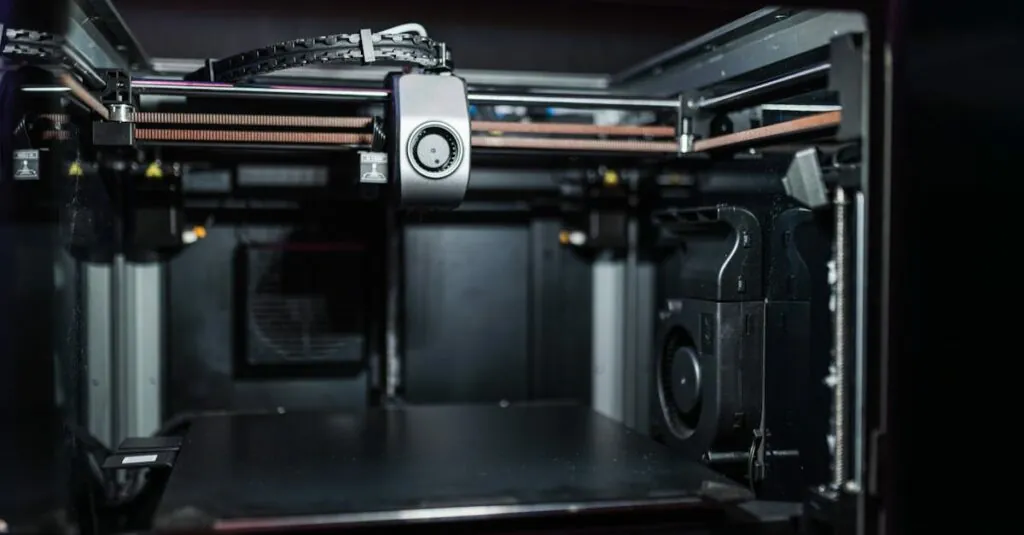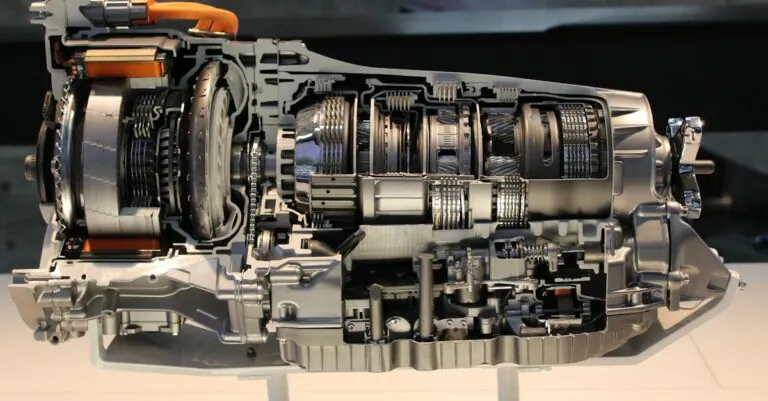Table of Contents
ToggleIn a world where paper jams and low ink warnings reign supreme, understanding printer hardware types can feel like learning a foreign language. But fear not! Whether you’re a home office hero or a corporate crusader, knowing the right printer for your needs can save you from a world of frustration—and maybe even a few printer-related meltdowns.
From inkjet to laser and everything in between, each printer type has its quirks and perks. Choosing the right one can mean the difference between printing out that important document on time or watching your dreams of productivity crumble like a poorly printed page. Dive into the fascinating realm of printer hardware types and discover which one will help you conquer your printing challenges with style and efficiency.
Overview of Printer Hardware Types
Understanding printer hardware types is essential for effective printing solutions. Inkjet printers are ideal for home use and can produce high-quality images. These printers operate by spraying tiny droplets of ink onto paper, allowing for vibrant colors and sharp details.
Laser printers, on the other hand, excel in speed and efficiency. They work by using a laser beam to create an image on a drum, which then transfers toner to paper. This method provides crisp text and makes laser printers perfect for high-volume printing tasks.
Dot matrix printers may seem outdated but still hold relevance in specific scenarios. They create images using a print head that strikes an ink-soaked ribbon against the paper. Businesses that print multi-part forms often benefit from these devices due to their carbon-copy capabilities.
Thermal printers utilize heat to transfer ink onto paper, making them popular for printing receipts and labels. Many retail environments utilize these printers for their reliability and quick output. Thermal transfer printers use a similar method but produce longer-lasting prints by using a ribbon.
3D printers open new possibilities for creativity and production. They create three-dimensional objects by layering materials, catering to industries like manufacturing and healthcare. Small businesses and hobbyists are increasingly adopting this technology for custom designs.
Finally, multifunction printers combine printing, scanning, and copying functions into one device, enhancing workspace efficiency. These all-in-one solutions save space and reduce costs, making them popular in both home and office settings. Recognizing the unique features of each printer type helps individuals and businesses make informed decisions on their printing needs.
Inkjet Printers
Inkjet printers serve as a popular choice for home and small office environments. They create high-quality prints by utilizing tiny ink droplets to form images and text on paper.
How Inkjet Printers Work
Inkjet printers work by employing a series of nozzles that spray ink onto paper. Each nozzle delivers minuscule droplets, forming precise patterns to recreate images or text. The ink cartridges, which may be separate or combined, ensure a consistent flow of ink. Most models utilize thermal or piezoelectric technology to control droplet placement. Thermal inkjet printers heat the ink to create bubbles, while piezoelectric ones use electric currents to push droplets out. This mechanism allows for exceptional detail, especially in color prints, making it suitable for photographs and graphics.
Advantages of Inkjet Printers
Inkjet printers offer several advantages that appeal to users. Primarily, the cost of initial purchase is often lower compared to laser printers, making them accessible for individual users. They excel in producing vibrant colors and intricate details, particularly with photo printing. Additionally, smaller footprints allow them to fit in tight spaces without issue. With versatile media support, they can print on various materials, including photo paper and cardstock. Maintenance typically requires minimal effort, with user-friendly instructions for replacing cartridges.
Disadvantages of Inkjet Printers
Despite their benefits, inkjet printers present certain disadvantages. Ink cartridges can frequently run low and require replacement, leading to ongoing costs that add up over time. Print speeds often lag behind those of laser printers, especially for large documents. Quality may decrease if the printer is unused for extended periods, resulting in dried-out nozzles. Regular cleaning is often necessary to maintain print quality, consuming more ink. Lastly, inkjet prints are prone to smudging and may fade more quickly when exposed to light and moisture.
Laser Printers
Laser printers use toner and a laser beam to create sharp, precise text and images on paper. These printers process data using an electrostatic charge to attract toner to specific areas of the drum.
How Laser Printers Work
Laser printers consist of several key components, including the laser, drum, and fuser. The laser generates a laser beam that projects an image onto the photosensitive drum. This process creates an electrostatic charge, attracting toner particles. Finally, heat and pressure from the fuser bond the toner to the paper, resulting in high-quality printouts that dry quickly.
Advantages of Laser Printers
Speed stands out as a primary advantage. Many laser printers can produce several pages in a minute, making them ideal for high-volume printing. Cost efficiency also plays a role, with toner cartridges lasting longer than ink cartridges. Print quality remains consistent, especially for text documents. Furthermore, laser printers often require less maintenance compared to other types, which enhances reliability in busy office environments.
Disadvantages of Laser Printers
Laser printers can exhibit limitations, particularly in color printing. While they’re excellent for text, color prints may not rival the vibrancy of inkjet outputs. Initial costs for laser equipment tend to be higher compared to inkjets. Additionally, the size and weight of some models can be a concern in smaller workspaces. Furthermore, laser printers may produce more noise during operation, which could be distracting in quiet environments.
Dot Matrix Printers
Dot matrix printers remain relevant for specific tasks despite newer technologies. These printers utilize a print head that strikes an ink-soaked ribbon against paper, forming characters and graphics through a series of dots.
How Dot Matrix Printers Work
Dot matrix printers operate by moving a print head horizontally across the paper. Pins in the print head create dots when they hit the ribbon, forming letters and images. The impact causes ink to transfer onto the paper, producing text in a distinctive style. Different pin configurations determine the resolution and quality, with more pins yielding finer detail. Many dot matrix models also have a multi-part printing capability, allowing simultaneous printing on several forms.
Advantages of Dot Matrix Printers
Dot matrix printers are known for their durability and longevity. They handle continuous forms efficiently, making them ideal for invoices and shipping labels. Low operational costs further enhance their appeal since ink ribbons can print thousands of pages before needing replacement. Reliability in harsh environments offers another advantage, as they resist issues like moisture and heat. Additionally, their ability to work in offline settings proves beneficial for businesses with unique printing needs.
Disadvantages of Dot Matrix Printers
Dot matrix printers do present some limitations. Print quality often lacks the clarity of inkjet and laser alternatives, resulting in less vibrant images and smaller text sharpness. Speed can also be a drawback; they generally operate slower than modern printers, affecting productivity. Noise levels during operation may be disruptive in quiet environments, leading to potential annoyance. Lastly, fewer features compared to multifunction options can limit their usability in versatile printing scenarios.
Thermal Printers
Thermal printers generate high-quality prints quickly and efficiently. They’re particularly favored for printing receipts, labels, and barcodes in various industries.
How Thermal Printers Work
Thermal printers utilize heat-sensitive paper and a heated print head to create images. When the print head applies heat, it activates the chemicals on the paper, resulting in a visible image. Direct thermal printers print directly onto heat-sensitive media. Thermal transfer printers, in contrast, use a ribbon that melts onto the paper. Both methods produce sharp images with minimal maintenance.
Advantages of Thermal Printers
Thermal printers offer numerous benefits. They typically produce high-quality prints with clear text and graphics. Speed ranks as another strong point, allowing for rapid printing, which benefits businesses with high-volume transactions. Operating costs remain low, as they require fewer consumables than inkjet or laser printers. Additionally, thermal printers operate quietly, making them suitable for environments where noise reduction is essential.
Disadvantages of Thermal Printers
Thermal printers include drawbacks as well. They rely heavily on specific types of media that can be more expensive than traditional paper. Print durability often falls short; thermal prints may fade over time when exposed to light or heat. Limited color printing also presents a challenge; thermal printers primarily produce monochrome images. High initial costs may deter some buyers, although long-term savings can counterbalance this investment.
Understanding printer hardware types is crucial for making informed decisions that enhance productivity and reduce common printing frustrations. Each printer type serves distinct needs and environments. Inkjet printers shine in home settings with their vibrant colors while laser printers dominate in high-volume office tasks with their speed and efficiency. Dot matrix and thermal printers maintain relevance for specific applications, offering durability and reliability. Meanwhile, 3D printers are revolutionizing creativity and innovation for hobbyists and businesses alike. By exploring these options, individuals and organizations can find the perfect printer that aligns with their specific requirements and preferences.







